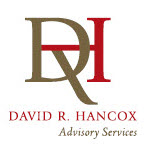Here is how MF Global describes itself on its web site:
“Indispensable, well-timed insight. Forward-thinking, unwavering vision. Deeply rooted passion for the markets. At MF Global, our relentless pursuit of market opportunity separates us from the pack and binds us in a common purpose—to help clients find an edge in today’s fast-paced, ever-evolving markets.
“Bringing together superior market access, well-timed market insights and powerful trading and hedging solutions. It’s our passion. And it’s why clients rely on MF Global to sharpen their edge in the world’s ever-changing markets.”
What a bunch of baloney!
Now it appears that Jon Corzine used the firm’s capital, and possibly the capital of his clients, to place bets on European bonds. He ignored the advice of other managers and senior executives by apparently circumventing the company’s system of internal control.
And MF Global broke the cardinal rule in this industry: it failed to segregate customer funds from its own working capital. Now MF Global clients may be out more than $1.2 billion.
Wall Street traders normally recognize they are in a high risk business. They often put in place a system of internal control designed to minimize the risk that a firm could place outsized bets that will put it out of business.
Those controls require a specific trading strategy to be approved by a series of oversight panels, including:
· The Board of Directors
· The Chief Executive Officer or President
· The Head of Sales and Trading
· The Chief Risk officer
· The Trading Chief
· The Risk Manager.
MF Global had an Audit and Risk Committee. The Audit and Risk Committee Charter included the following:
I. Purpose of the Committee
The purpose of the Audit and Risk Committee (the “Committee”) of the Board of Directors (the “Board”) of MF Global Holdings Ltd. (the “Company”) is to assist the Board in its oversight of:
· the integrity of the Company’s financial statements and internal controls,
· the Company’s compliance with legal and regulatory requirements,
· the independent auditors’ qualifications and independence,
· the performance of the Company’s internal audit function and independent auditors, and
· the Company’s risk management policies, processes and profile.
IV. Committee Duties and Responsibilities
The Committee shall have the following duties and responsibilities:
With respect to risk management:
· Review generally the overall enterprise risk management framework and related governance model and recommend to the Board approval of same.
· Discuss the Company’s guidelines and policies that govern the risk management process.
· Review periodically the Company’s major operational, financial, reputational, legal and compliance risk exposures and the steps management has taken to identify, assess, monitor and mitigate such exposures.
· Receive regular independent reports from the Chief Risk Officer about the risk profile of the Company, against the risk appetite and risk tolerances adopted by the Board, and any reports on material breaches of related policy.
· Review and provide advice to the Board’s Compensation Committee with respect to the compensation of the Company’s Chief Risk Officer.
VI. Performance Evaluation
The Committee shall conduct and review with the Board annually a performance evaluation of the Committee, which evaluation shall compare the performance of the Committee with the requirements of this charter. The performance evaluation shall also include a review of the adequacy of this charter and shall recommend to the Board any revisions the Committee deems necessary or desirable, although the Board shall have the sole authority to amend this charter. The framework for conducting the performance evaluation shall be established in such manner as the Nominating and Corporate Governance Committee deems appropriate.
(DRH: I’d love to see this evaluation!)
*********************
Despite all the right words written in its policies and procedures – the Board failed miserably. The normal oversight functions that are in place at other trading firms were ignored.
Mr. Corzine was the Chairman and Chief Executive Officer of MF Global – a bad decision. The Chairman is the head of the Board of Directors. The Board’s job is to oversee management. Management is headed by the Chief Executive Officer.
So, when the Chairman and the CEO is the same person – do you really believe effective oversight will occur???
Give me a break!
So Mr. Corzine traded $6.3 billion on European debt and talks only with the Board of Directors. He doesn’t follow the normal process which would have included the Chief Risk Officer. As we see time and again, management decides to override the system of control and the firm goes out of business and harms the financial interests of its shareholders and creditors.
In assessing control systems, we can see the wisdom of the Treadway Commission when it said the control environment (tone at the top) is the foundation of a control system.
It’s time for senior managers to recognize they are not necessarily the “smartest person in the room.” They need to adhere to a well thought out system of control, just as they expect all others to do.
Overriding the system of control is not a management right. It should only occur in extreme circumstances and only with the approval of the Board and other senior executives.
As we see in this example with MF Global, the words that are written and relied upon by others have no meaning when small minded managers decide the rules and values of a company do not apply to them.
 |
| [email protected] |
